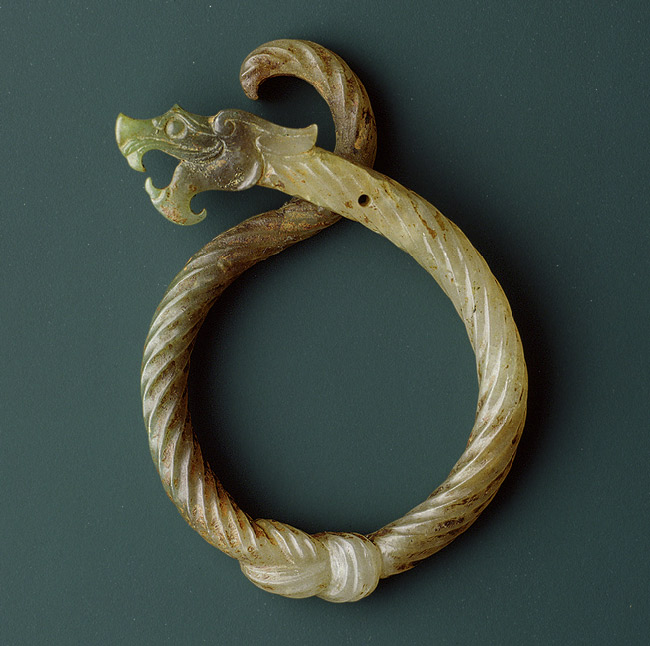 by Wuyizidi on Tue Oct 07, 2008 9:01 am
by Wuyizidi on Tue Oct 07, 2008 9:01 am
What do we mean by natural? There are so many issues here, here's my first attempt at sorting them out:
First, what is natural?
What people usually mean by that is what we can do without learning. You touch a hot surface of stove, you instinctively withdraw your hand. Something flies toward your eye, you immediately close it. No one needs to teach you that. Commonly we define sources of behavior in two ways: nature vs nurture. Most of what animals can do, no matter how incredible (swim thousands of miles to a location they've never been before to spawn) are hardwired in their DNA. Much of what we do is not.
Recovering original nature
Given the structure of the human body, there are certain ways of moving it that are more efficient than others. Not all types of golf swings produce the same result right? One issue is that, man's level of existence has always been largely defined by his tools. Until industrial revolution, those tools are very primitive, and most of the power needed to do any task is generated by the human body. Today, for most of us, machines provide most of that. So most of us are not very physical, not in touch with how to move in the most effective, efficient manner. In that sense, yes, there are natural ways of moving (using the whole body instead of just the right hand/arm) that are far better.
In that case then, we still need training to recover that original nature right?
Reinforcement
This leads to the other issue - how did we lose that original nature? The answer is habit. If you repeat something often enough, each time training your neuro pathway to react in the same manner to the same stimulant, eventually, you can do that without much conscious thought. This is what we mean by 'second nature' right? So if in some typical situation, a heavy weight needs to be lifted, the response of a person living in a primitive society is to just go directly at it himself, whereas one living in modern society is to reach some button. So much so that person in modern society have to be reminded, if he were to attempt it himself, he needs to 'lift with the legs, not with the back". Lots of things we do today are learned instead of instinctive. We only have problem separating them because we learned from a very young age.
Behavior under emergency
The whole issue of habit - reinforcement, leads to what's mentioned in a post above, about how when you are in a real fight, the only thing that can come out is what is natural to you at that moment. It's really "the only thing that can come out is what you can do without thinking", because there's not much time for conscious thought. If you just learned a new skill the day before, no matter how simple, most likely you cannot do at that moment. But a skill, even if it is highly sophisticated, if you have been practicing that for ten years, to a point when that is your default reaction to a punch, you can do as if you are born with it.
Is anything truly, 100% natural?
Within this whole fighting issue is another issue about psychology of fighting. Anyone who has played sports even in high school level can tell you competing in an actual game, in front of thousands of people cheering for or against you, is very different from practicing. General Cheng Chongdou (contemporary of Qi Jiguang) said in battle, with the emotions running so high, most people can only utilize a small fraction of what they know. Most people fall back to just the most basic skills they know. That "if you can use 50% of what you know, you will be invincible". Does that means we should just practice the most basic things? No, this is the same reason we practice high kicks - we want to elevate what we're capable of doing, so our 50% is so much higher than other people's 50%.
We can never really separate the mind and the body. The truth is, most of our moments are learned (even walking, which involves over 200 muscles), and even if we have done them all our lives, those movements can be inhibited by the mind. We see gymnasts, skaters fall all the time during competition right? Those movements they practiced tens, if not hundreds of thousands of times, so why do they fail? Because the mind rules all. If fighting/sports is really something completely natural, something we can do without any thought, then no one, certainly elite athletes, would ever 'choke' in a game right?
Does natural = best?
Also implicit in this whole argument is that natural is perfect, natural is the best. Any attempt to alter it give us suboptimal results. Earlier we have demonstrated that even if this is the case, learning is still necessary to achieve it. Even Tiger Woods is not born with perfect swing, in fact he practices that harder than anyone else. Otherwise, no one needs to practice, ever.
Now we need to examine that assertion, is what is natural the best response/behavior for all situations?
What is your natural reaction when you find yourself seconds away from ramming into the back of another car? You break right? What if you are the other driver, you speed up right? But in professional auto racing, you do the opposite. Drafting results in dramatic energy efficiency for both cars. What is your natural reaction to bodily fluids? Fear, disgust, discomfort? If you see someone with horrible skin disease, do you go close to them, or away from them?...
The examples are endless. In many cases, doing something truly high level involves suppressing what is natural and doing the opposite: when a fast punch to the face comes, our eyes remain open and look at the fist instead of blinking; instead of contracting, tightening up, we open and relax; instead of moving away from it, we greet it; instead of holding our breath, breath shallowly, or hyperventilate, as we naturally do under stress, we breath in strong, deep, even, long, smooth breath; instead of struggling directly at the point of impact, we move another part of the body...
Internal training
In the examples above, we can see that mental training is a big part of what makes new reactions possible. This involves overriding your instinctive emotional reaction (xin: big force coming toward me - do not want), and the natural sequence of responses that follows (mental - yi: move away from the big force, physical - qi, li: activate stress response, tighten up, run away, etc). So that's part of reason we call it internal martial art right? To make the type of physical skills we're seeking possible, we need to change our mental reactions and states in radical, important ways. It doesn't matter how good our hand-eye coordination is, if we're afraid to get close to other cars traveling at 200 mph, we cannot be good race car drivers.
External and internal martial art's approach toward "natural"
Here we have one of the biggest difference between training approach of external and internal martial art. People say "external martial art reinforces natural abilities, internal martial art changes it". Our natural behavior is try to beat the other person using superior speed and power. So in external martial art training, we try to make people stronger, faster. Look at Baji and Thai Boxing, the two most aggressive styles within that. Basically, their approach is, I don't care what you do, I'll make myself so strong, so hard, my blows will destroy whatever stands in my way. This is why conditioning is so paramount in external martial art right, it's a crucial part of what makes it work. Look at what happens when even elite boxers get a little slower, little weaker as they reach mid-30's, like Roy Jones, or Mike Tyson, all of sudden they start to lose nobodies all the time right?
In internal martial art we train to increase power and speed to, those attributes are still important, but they are not the only things that make our skills work. We also look at other aspects (we call them internal) of force, manipulating them to our advantage. So that even if we are a little bit slower and weaker, we still have chance to beat them. As mentioned under previous bullet, instead of just reacting instinctively, only with bigger speed and power, we want to react in a totally different way. And with sufficient training, we want replace our default behavior (natural, instinctive response) with a set of new ones (new nature).
Wuyizidi.
Last edited by
Wuyizidi on Tue Oct 07, 2008 9:23 am, edited 7 times in total.







 There's also more advanced stuff beyond the animals but I've never done that (not yet at that stage).
There's also more advanced stuff beyond the animals but I've never done that (not yet at that stage).
